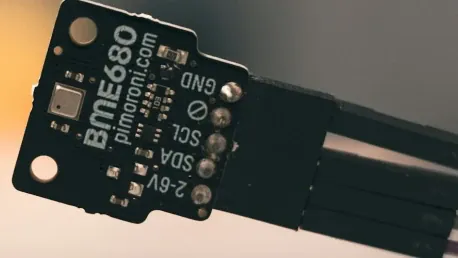The integration of the Internet of Things (IoT) into the renewable energy sector is creating revolutionary changes in how energy is generated, distributed, and consumed. By leveraging IoT technologies, energy systems can achieve optimal performance through real-time monitoring and data-driven insights. This transformation promises to significantly enhance the efficiency and reliability of renewable energy sources, such as wind and solar power, leading to a more sustainable and resilient energy future.
Enhancing Energy Efficiency and Reliability with IoT
Real-Time Monitoring and Predictive Maintenance
One of the key benefits of IoT technology is its ability to collect vast amounts of data from connected devices, which can then be analyzed to predict energy production, identify inefficiencies, and forecast maintenance needs. For instance, IoT sensors attached to solar panels can continuously monitor performance metrics, such as power output and temperature, allowing for real-time detection of issues that might affect efficiency. By identifying when panels require cleaning or repairs, operators can ensure that the solar systems maintain optimal output, thereby maximizing energy production.
Similarly, in wind farms, IoT devices track turbine performance by monitoring parameters such as rotor speed and vibration levels. This real-time data collection helps predict potential issues before they escalate into significant problems, enabling preemptive maintenance and reducing downtime. By facilitating a proactive approach, IoT enhances the reliability of wind energy systems. The continuous monitoring and predictive capabilities not only boost efficiency but also extend the lifespan of renewable energy assets, making the sector more economically viable and sustainable.
Dynamic Demand Response Management
The role of IoT in demand response is another significant trend in the renewable energy sector. Demand response involves adjusting energy supply in real-time based on the current demand, which is crucial for integrating renewable energy into the grid. IoT technologies enable energy providers to monitor consumption patterns and forecast demand peaks accurately. This dynamic management helps balance the intermittent nature of renewable sources like wind and solar, reducing the need for fossil fuel-based backup power and enhancing grid stability.
For example, smart meters equipped with IoT technology can relay real-time consumption data to energy providers, enabling them to adjust supply levels swiftly. This capability is particularly important during periods of high renewable energy generation when over-supply can lead to wastage. By fine-tuning energy distribution, IoT ensures that the generated power is used efficiently, reducing the reliance on non-renewable energy sources. This dynamic approach not only optimizes energy use but also contributes to reducing greenhouse gas emissions, aligning with global sustainability goals.
Addressing the Challenges of IoT Integration
Data Security Concerns
While the benefits of IoT in the renewable energy sector are substantial, there are challenges associated with its adoption, particularly concerning data security. The vast amounts of information collected by IoT devices are highly valuable but also vulnerable to cyber-attacks. Ensuring the privacy and security of this data is paramount to prevent unauthorized access and data breaches, which could have severe implications for energy systems’ reliability and safety.
To address these concerns, robust cybersecurity measures must be implemented, including encryption, firewalls, and regular security audits. Additionally, developing standardized protocols for data handling and storage can help mitigate the risk of cyber threats. Energy providers must prioritize investments in cybersecurity infrastructure to protect sensitive information and maintain trust in IoT-enabled systems. By safeguarding data, the renewable energy sector can fully harness IoT’s potential without compromising security.
Reliable Connectivity Requirement
Another significant challenge is the need for robust and reliable connectivity to ensure the seamless operation of IoT devices. Renewable energy systems, often located in remote or harsh environments, require consistent and fast internet connections to transmit data effectively. Any disruption in connectivity can hinder real-time monitoring and response capabilities, affecting overall system performance and reliability.
To overcome this challenge, investment in advanced communication technologies such as satellite internet and mesh networks is essential. These technologies can provide reliable connectivity even in remote locations, ensuring uninterrupted data flow between IoT devices and control centers. Energy providers must also consider redundancy plans to mitigate connectivity issues, such as using multiple communication channels or backup systems. By ensuring robust connectivity, the renewable energy sector can fully leverage IoT technologies to enhance efficiency and reliability.
The Path Forward
The Transformative Potential of IoT
The findings of the article highlight the transformative impact of IoT on the renewable energy sector. By enabling real-time monitoring, predictive maintenance, and dynamic demand management, IoT offers significant advancements in energy efficiency and reliability. These capabilities not only optimize renewable energy systems but also support the integration of renewables into the grid, reducing reliance on fossil fuels and contributing to a sustainable energy future.
However, achieving these benefits requires addressing critical challenges related to data security and reliable connectivity. Robust cybersecurity measures and investments in advanced communication technologies are essential to safeguard data and ensure seamless operation. By overcoming these challenges, the renewable energy sector can fully harness IoT’s potential to revolutionize energy solutions and drive the transition to a cleaner, more resilient energy landscape.
Conclusion and Future Outlook
The integration of the Internet of Things (IoT) into the renewable energy sector is driving significant changes in how energy is produced, managed, and utilized. IoT technologies enable energy systems to optimize performance through real-time monitoring, advanced data analytics, and automated control. With IoT, energy providers can gather critical data on aspects like equipment health, energy output, and consumption patterns. This information is essential for making informed decisions and proactive maintenance, ultimately improving the longevity and efficiency of energy systems. The increased efficiency is particularly beneficial for renewable energy sources, such as wind and solar power, which are inherently variable. By harnessing IoT, these energy sources can become more reliable and effective, paving the way for a sustainable and resilient energy future. This digital transformation can drastically reduce operational costs, minimize downtime, and improve energy distribution networks. Overall, IoT’s role in renewable energy offers a promising pathway toward a cleaner, more efficient, and dependable energy landscape.









